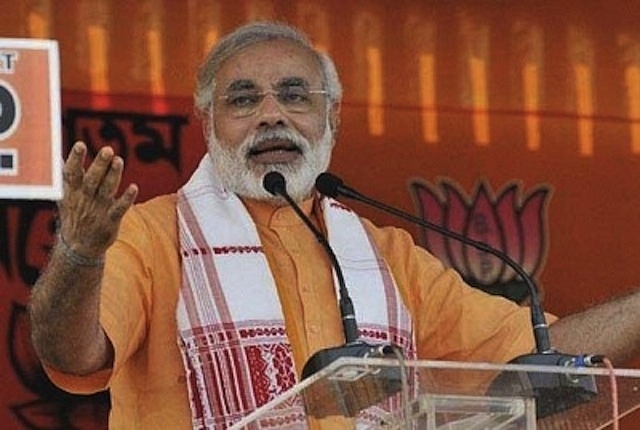
Constructing The Narrative Of An Intolerant India
The latest strategy of Modi’s detractors focusses not only on usurping the national narrative but also at managing small, localised events.
On Tuesday, September 29th, a carcass of a pig was found on the terrace of Shahi Masjid of Lal Kothi in Bhagalpur, Bihar. By afternoon, a group of young Muslims came to the spot and simply removed the dead carcass while the local news reporters and mullahs warned the ‘minority community’ to maintain calm. Despite being in the midst of an election season, and despite of a strenuous history of the region, the situation in the town area remained calm as the local Muslim leadership was determined not to raise even a symbolic protestation against an attempted desecration of their religious place of worship.
On Friday, October 23rd, a group of Hindu devotees carrying dhols were passing through a road that was home to a mosque in Sri Dungargarh town of Bikaner in Rajasthan. Young Muslims objected to the loud procession of Hindus and started pelting stones. Soon the situation went out of control as the local Muslim leadership (allegedly supported by some local politicians and local journos) accused the police of being biased. By late evening, many shops were set on fire. Curfew had to be imposed in the town despite of the fact that the whole incident was simply a minor fracas due to some loud devotional music being played as part of the Dussehra celebrations.
Both these incidents that occurred almost simultaneously hold a twisted mirror to India as it is being shaped by controlled reflections of a million forced mutinies. The first incident of Bhagalpur, Bihar, did not find as much as a cursory mention even in the local news media but the second incident found prominence among many national newspapers including a very south Indian English newspaper which has no readership in Rajasthan.
Furthermore, the stark difference between reactions of the local leaderships of the “minority community” along with those of the local anti-Modi politicians tells a story of its own. While in Bihar, the local political leadership was mindful of any “communal incident” potentially creating counter polarization of Hindus in an election season, in Rajasthan, a completely opposite approach was adopted by the local leadership.
Finally and most importantly, Bihar is ruled by a “secular” government led by Nitish Kumar, who is going to polls right now while Rajasthan is under the “communal” rule of the BJP with no election in sight for at least three years.
Modi won an unprecedented mandate in the summer of 2014 going against all the collective wisdom of India’s national intelligentsia. And that has evoked many reactions since then – the latest being the clamor to return Akademi awards by writers and artists. The narrative processes that were being built by the Lutyens elite till now hinged on this creation of an atmosphere of “intolerance”. The myth of ‘attack on Christian missionaries’ early this year, followed by numerous stories of attacks on minorities being deliberately and microscopically enlarged eventually led to the creation of the “Dadri” syndrome which epitomized the fault-lines that were actively propounded to avenge 2014.
Yet, Lutyens intelligentsia had understood that such a narrative of intolerance could at best produce a false reflection of anger in the TV studios which may be enough to project a victorious Kejriwal in Delhi but would hardly matter in the hinterland. Thus, in the latest logical progression of that narrative process, the Lutyens elite has started to attack the very foundation on which the Modi wave was built – the United Spectrum of Hindu Votes. What we are witnessing today is essentially a three-pronged assault on the Modi edifice.
The primary attack is being carried out by creating a cottage industry for selective outrage which is controlled centrally at the top in Lutyens. For instance, while the news media maintain almost complete silence on two Dalit men belonging to the much backward Pasi community being beaten to death in an election-bound Munger district of Bihar on September 28th, a Dalit killing in distant Haryana is made instant news in Bihar.
The second part of the attack is the way localized “secular” leaders are willing to fight only carefully chosen battles aligned to the larger national anti-Modi story. The two contrasting reactions of Bikaner and Bhagalpur show how these local battles are shaping up exactly aligned to the central opposition strategy.
The third part of the attack is the strategic capability being acquired by the opposition parties to exploit Hindu fault lines by effectively deploying seemingly innocuous and ill-timed statements by anybody associated with Modi through a systematic rumor campaign. How Nitish Kumar’s strategists are utilizing Mohan Bhagwat’s and V.K. Singh’s statements in Bihar is a case in point.
How BJP as a political party and how the new emerging Indian Right ecosystem on the whole reacts to this three-pronged battle of the narratives would probably shape the future of Indian polity in general.